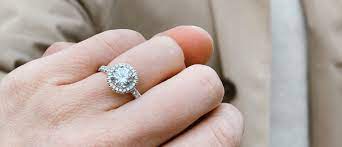What is PEEK? A Comprehensive Guide to This Advanced Dental Material
Polyetheretherketone (PEEK) is a high-performance thermoplastic polymer that has gained significant attention in the dental industry due to its unique combination of strength, biocompatibility, and versatility. It is increasingly being used in various dental applications, from implant abutments to crowns and bridges. This comprehensive guide will provide an in-depth look at peek dental material properties, benefits, and its growing role in dentistry.

Polyetheretherketone (PEEK) is a high-performance thermoplastic polymer that has gained significant attention in the dental industry due to its unique combination of strength, biocompatibility, and versatility. It is increasingly being used in various dental applications, from implant abutments to crowns and bridges. This comprehensive guide will provide an in-depth look at peek dental material properties, benefits, and its growing role in dentistry.
What is PEEK?
PEEK is a thermoplastic polymer known for its exceptional mechanical properties and resistance to wear and high temperatures. It is part of a family of polymers called polyaryletherketones (PAEK), which are known for their durability and chemical resistance. PEEK is often compared to metal in terms of strength but is much lighter and more comfortable for patients.
In dentistry, PEEK is used as a material for dental restorations and prosthetics, including crowns, bridges, dentures, and implant abutments.
Key Properties of PEEK
1. Biocompatibility
-
Why It’s Important: PEEK is highly biocompatible, meaning it does not cause adverse reactions in the body. This makes it ideal for use in dental implants and restorations, as it integrates well with bone and soft tissue without causing inflammation or rejection.
-
Benefit: Reduced risk of allergies, inflammation, or sensitivity for patients compared to other materials.
2. Strength and Durability
-
Why It’s Important: PEEK has excellent mechanical strength, toughness, and resistance to deformation, making it comparable to metals such as titanium. It can withstand the forces of chewing without breaking or losing shape.
-
Benefit: Long-lasting dental restorations and implants that are highly durable even under the pressure of daily use.
3. Lightweight
-
Why It’s Important: PEEK is much lighter than metals, which makes it more comfortable for patients, especially in larger dental restorations or full-arch prostheses.
-
Benefit: Less strain on the jaw and surrounding tissues, contributing to a more comfortable experience for the patient.
4. Chemical Resistance
-
Why It’s Important: PEEK is resistant to various chemicals, including acids and solvents. This makes it an ideal choice for dental applications exposed to the harsh environment of the mouth.
-
Benefit: Reduced wear over time from exposure to food, drinks, and oral hygiene products.
5. Thermal Stability
-
Why It’s Important: PEEK maintains its mechanical properties even in high temperatures, ensuring it remains strong and stable in the mouth, where temperatures can fluctuate.
-
Benefit: Resistant to heat and wear from temperature changes associated with food and beverages.
Benefits of PEEK in Dentistry
1. Aesthetic Appeal
-
Why It’s Important: PEEK is a tooth-colored material that provides a more aesthetic alternative to metals, making it ideal for visible dental restorations.
-
Benefit: PEEK can be customized to match the natural color of teeth, offering a more aesthetically pleasing result compared to traditional metal-based restorations.
2. Compatibility with CAD/CAM Technology
-
Why It’s Important: PEEK can be easily milled using CAD/CAM technology, allowing for precise and efficient fabrication of dental prosthetics.
-
Benefit: Faster production times and highly accurate restorations, which leads to better-fitting and more comfortable final products.
3. Bone Integration for Implants
-
Why It’s Important: PEEK has been shown to integrate well with bone, making it an ideal material for dental implant abutments.
-
Benefit: Enhanced osseointegration (the process of bone bonding to the implant), which improves the overall stability and longevity of the implant.
4. Reduced Wear on Opposing Teeth
-
Why It’s Important: PEEK is gentle on opposing teeth, unlike metals or ceramics, which can cause wear and abrasion.
-
Benefit: Protects the patient’s natural teeth from excessive wear while maintaining the longevity of dental restorations.
5. Non-Allergenic
-
Why It’s Important: Unlike metals or certain ceramics, PEEK is non-allergenic and does not cause irritation or allergic reactions.
-
Benefit: Ideal for patients with metal allergies or those who have had reactions to other dental materials.
Applications of PEEK in Dentistry
1. Dental Implants and Abutments
PEEK is increasingly used in the manufacture of dental implants and abutments. While titanium is commonly used for the implant itself, PEEK abutments offer a metal-free alternative that still provides strength, stability, and biocompatibility.
2. Crowns and Bridges
PEEK can be used to create both temporary and permanent crowns and bridges. When used as a framework for a crown, it offers strength and durability while being lighter and more aesthetic than metal alternatives.
3. Dentures and Partial Dentures
PEEK’s biocompatibility and strength make it an ideal choice for dentures and partial dentures. It provides a comfortable and long-lasting solution for patients who need removable prosthetics.
4. Orthodontic Appliances
PEEK is also used in orthodontic applications, such as for the fabrication of retainers or other appliances that require precision and durability.
Challenges of PEEK in Dentistry
While peek dental material offers many benefits, there are a few challenges to consider:
-
Cost: PEEK is more expensive than traditional dental materials, which may make it less accessible for some patients.
-
Bonding Issues: Bonding PEEK to other materials, such as ceramics or resin, can be more challenging compared to metals, requiring special techniques or adhesives.
-
Surface Finish: While PEEK is durable, it may not have the same polish or gloss as ceramic materials, potentially affecting its aesthetic appeal in highly visible areas.
Conclusion
PEEK is a revolutionary material in the dental field, offering numerous benefits like biocompatibility, strength, aesthetic appeal, and comfort. Its versatility makes it suitable for a wide range of dental applications, from implants to crowns and dentures. While it may come with higher costs and some technical challenges, the advantages it provides make it a highly promising option for both patients and dental professionals seeking durable, comfortable, and aesthetic dental solutions.
What's Your Reaction?



















